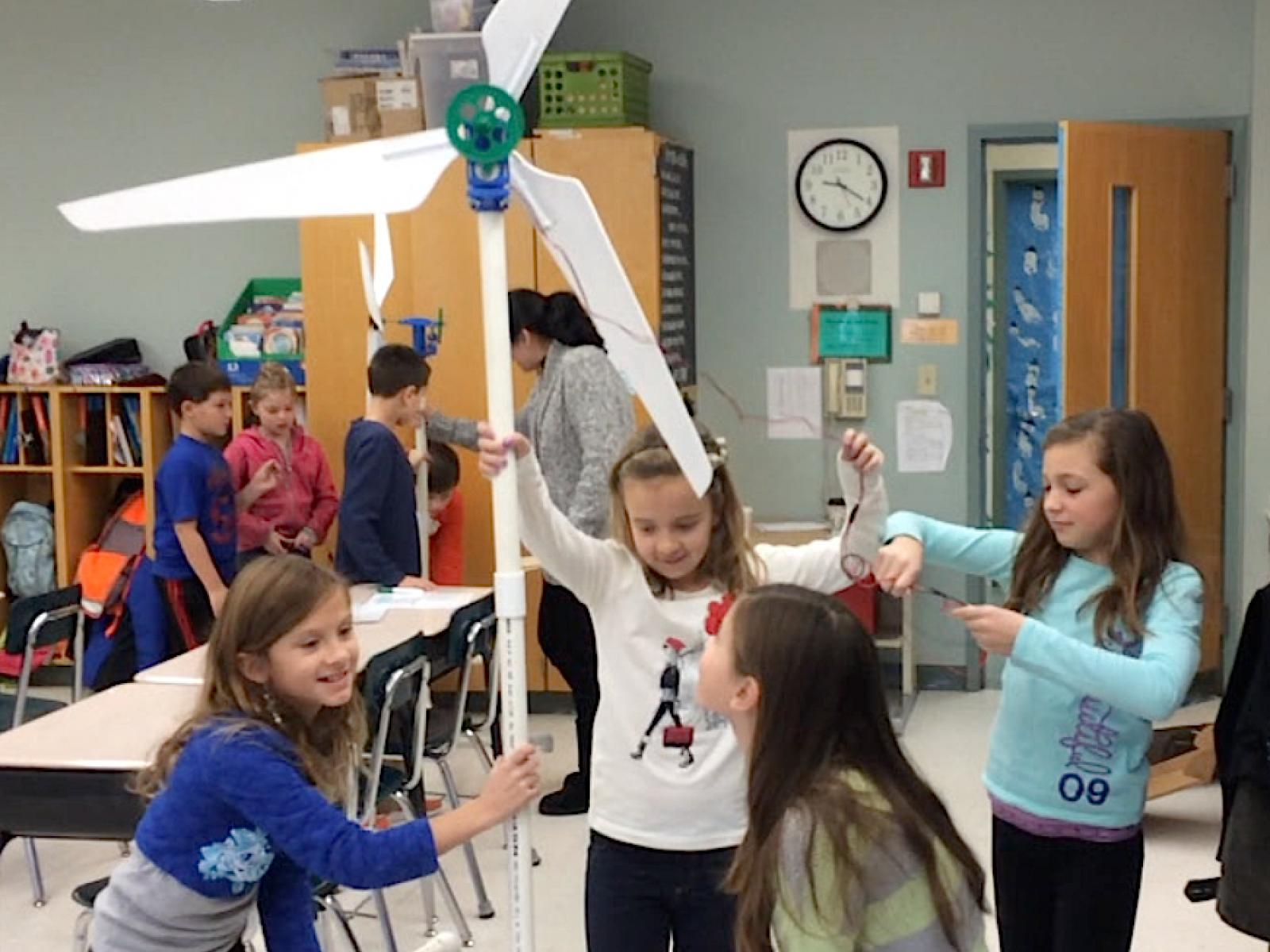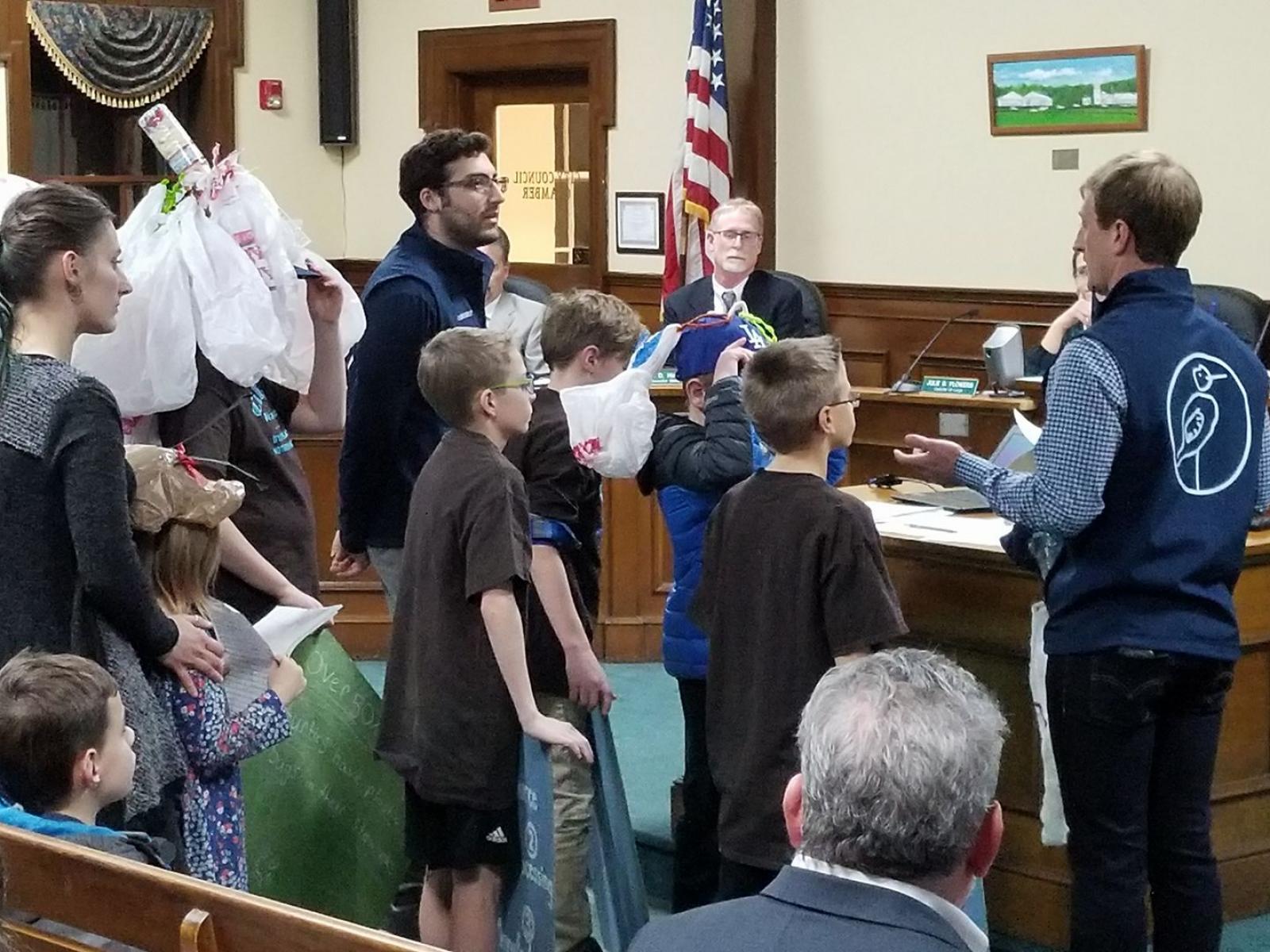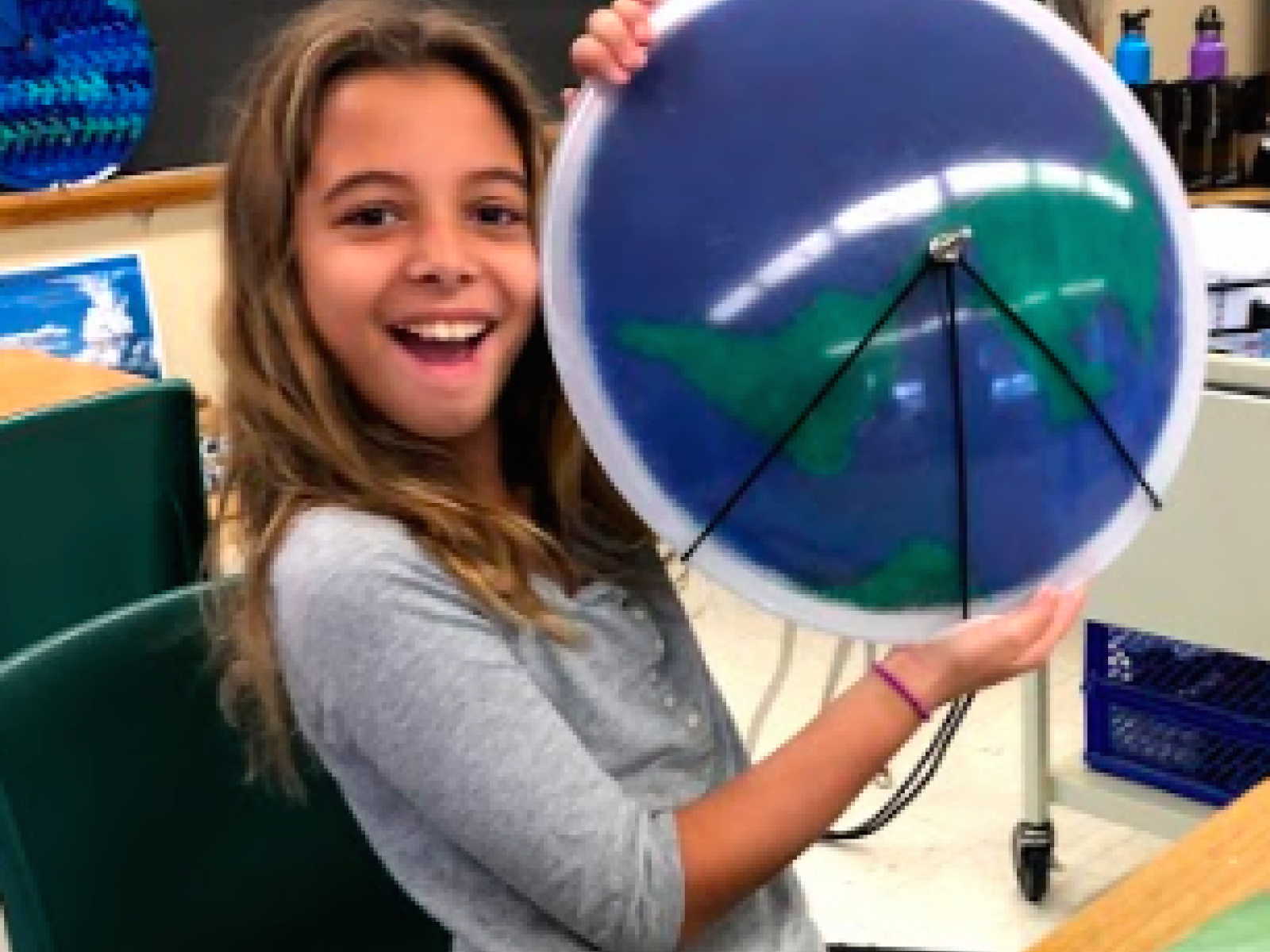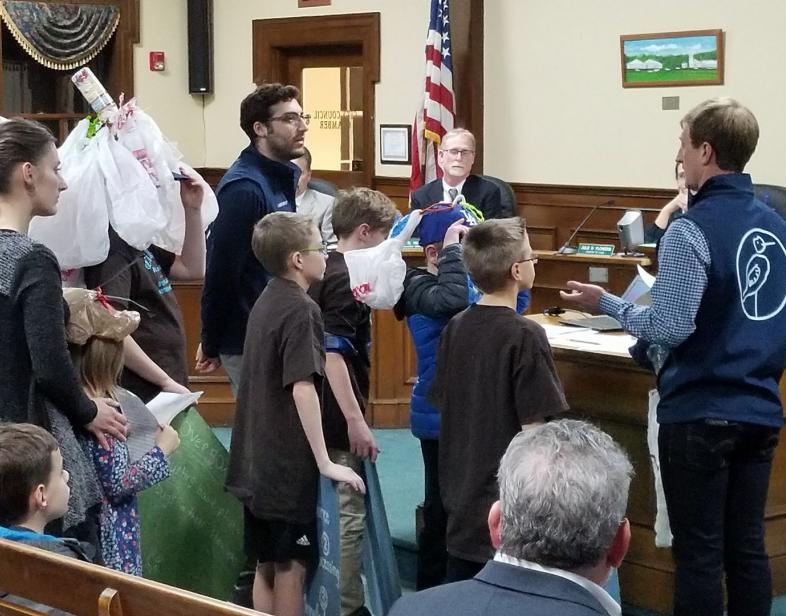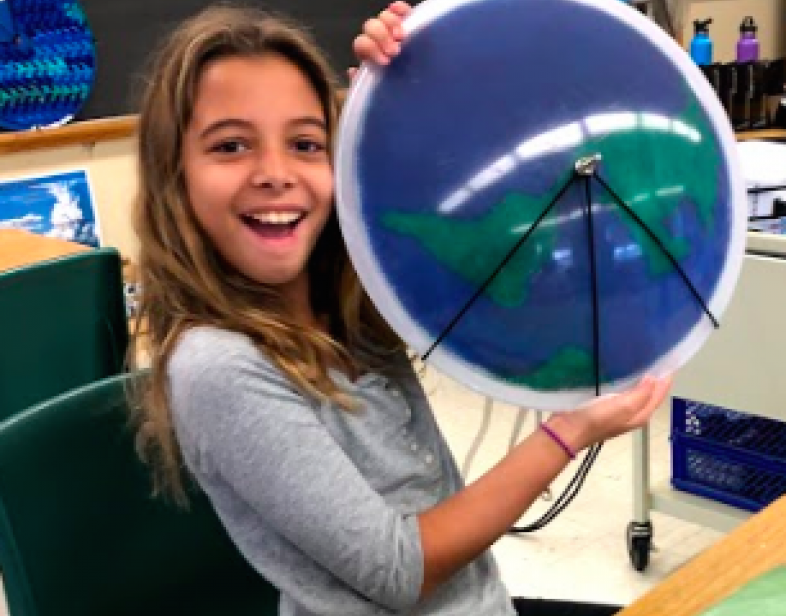An Overview Of Our Solution
Environmentalism is often perceived as a trendy topic served with a hearty side of guilt that leaves people feeling overwhelmed. We change that conversation through a unique education program that unites three critical groups in the race to combat climate change; field experts, college students, and youth. Traditional environmental education is about nature, but we spend 93% of our lives indoors, which is why our program focuses on our complex 21st century daily lives. Kids engage in a multi-year series of hands-on learning that links their everyday choices to their health, community and planet. They learn why their actions matter, are empowered to be part of the solution and get others involved. Kids take actions to lower their carbon footprint daily, infuse their new habits into their homes and become powerful messengers in their communities.
- Population Impacted: 7,000 people per year
- Continent: North America
Context Analysis
At 26, Co-Founder Lauren Belmonte was working as an environmental scientist, experiencing first hand the impact that mankind’s consumerism and excessive conveniences were having on the planet. With population growing by 200,000 each day, she knew we could not sustain this way of life. As in medicine, our best chances of success lie not with treating the symptoms, but with combating the cause; human consumption. She felt it was critical that a greater majority of people learn to live more sustainably. However, environmental education traditionally focuses on trees, whales and nature; albeit important, but disconnected from the problem. Americans spend 93% of their time indoors. Environmental education should be focused on people and our complex 21st century daily lives. Sustainable behavior should be instilled in all members of society; it’s as important as kindness and learning to read. Lauren took to action with an engaging new approach that is plugged seamlessly into any school.
Describe the technical solution you wanted the target audience to adopt
We’re redefining default behaviors and lifestyle choices in elementary, middle school, and college students. Our students understand why their everyday choices matter and are empowered to make choices that create a more sustainable future. Participants reduce energy use at home and school; walk, ride bikes, carpool; save 5+ gallons of water per day; repair broken toys and clothes; donate unwanted goods; compost; remove toxic cleaners and personal care products from their homes and schools by making their own; petition to support renewable energy policies in their communities; avoid single use plastics; seek locally grown foods; go meatless; and track all of these changes daily.
Students are becoming conscious consumers, living more sustainable lifestyles, and lowering carbon emissions. They understand how their lifestyle affects their health, community and planet. They are mitigating climate change one choice at a time, and becoming vocal advocates for change.
Type of intervention
Describe your behavioral intervention
Imagine you’re a 5th grader. Into your classroom walks a scientist and cool college student. They’ve brought with them what looks to be a fascinating set of tools. Imagine your excitement when they roll out a 100ft world map. You’re exploring the global food system- you never knew those produce stickers tell you where the food is grown. With a group of your peers, led by your mentor, you measure the distance your food had to travel to reach your plate, and convert that distance to carbon emissions. You then get to experience what it’s like to be the farmer, the trucker, the cargo ship captain, and can visualize your food’s supply chain. You are stunned by the impact that just one banana can have! All the groups in the class present their findings too. But there’s more; your mentor presents a fun challenge: a Produce Passport to start taking to the grocery store and searching for the most locally grown foods. Mom and dad are excited that you’re helping with the shopping and off the iPad! You ask to visit the local farm with your family, because super local foods earn you the most points. You proudly bring your passport filled with stickers back to class, where you compile your points with classmates. You’re excited to find out if your class won the school-wide competition.
This is the 11th time you’ve had Change is Simple over the last 3 years. Each time they have something new and exciting, and a clear way for you to make a change in your life.
As needed, please explain the type of intervention in more detail
Social: College student educators serve as mentors and role models, and demonstrate that sustainable actions can be simple, cool and smart.
Emotional: Scary/overwhelming topics are spun into an opportunity for kids to feel empowered and proud to take action. Kids are “wowed” by our learning tools that help them visualize and relate to complex topics.
Choice: Students take guides home & place challenges around their schools that help redefine default choices. Ex: Produce Passport explained above, and large displays in the cafeteria that 1) show alternatives that kids can use to pack zero waste lunches (i.e. reusable container vs zip lock bag), 2) encourage meatless & healthy meals.
Each unit has a unique focus, but all use these strategies.
Describe your implementation
Our education program transforms classrooms into construction zones and ecosystems, and students into engineers and scientists. Partnering with public elementary and middle schools, we weave sustainability education into the classroom experience. The program provides a multi-year series of project-based learning that’s made up of over 30 units on sustainable living. For example: Carbon Footprint, Life Cycle of Stuff, Energy at Home, Renewable Energy, Zero Waste Living, Creating Green Products and more.
The series builds in complexity from 2nd-6th grade, the most formative ages for establishing habits and values. Students receive 4-10 units per year. Each unit is comprised of a 1-hour workshop, delivered by our staff and college mentors, and supplemented with a resource guide for teachers that includes assignments, videos/articles/books that extend the learning and track the behavior changes between our visits.
Mindful that time in public schools is at a premium, we designed our program to fit into any school by integrating required curriculum. Using skills in math, literacy and science, our program works in tandem with standards already required in schools. Consequently, by inserting our programs into public schools, we reach a much broader audience than those who seek out environmental education on their own.
“The program is absolutely outstanding! All of the teachers agree how aligned it is with the curriculum and our current teaching of Energy and Natural Resources! The students were actively engaged and were able to use the knowledge they learned to take action!”
-4th grade teacher, Woburn MA.
We adhere to the age old adage, “it’s not what you say but how you say it”. Our program doesn’t tell children what to do; rather it allows them to discover the right choices through activities, experiments and challenges. The program is learner centric, designed around the student not the problem.
External connections
Partners & stakeholders: Public school teachers & administrators- over 20 public school districts in Greater Boston; Parent groups; Corporate partners- National Grid Foundation, Cell Signaling Technology, Western Digital, New England Biolabs; Higher Education- Northeastern University, Endicott College and others; Local organizations and politicians working toward more sustainable communities.
Our connections with higher education and corporate partners allow the education program to stay on the cutting edge and provide accurate information. Corporate partners help us attain the tools necessary to educate and excite children. When our corporate partners and political supporters see the efforts and enthusiasm from the children in the program, they are also compelled to explore how they can support sustainable behavior and carbon reduction in their companies and communities.
Who adopted the desired behaviors and to what degree?
Over 20,000 students have engaged with the Change is Simple program to date. Over 87% of our students actively participate in the behavior change challenges, where students take action and track their results in friendly competition between fellow students, classrooms and schools. The challenges are fun and reward-based with measurable outcomes (outlined in next question).
“Change is Simple brings legitimacy & relevance to environmental sustainability issues and the need for us to address them as a society. Our students are left craving more as they begin to see their world differently, how to apply practical solutions for sustainability and truly make a difference.” -Principal Salem, MA
Our college mentors also adopt the behavior change encouraged in the program. Hear from a former mentor about his experience with Change is Simple: https://youtu.be/jQpJG_3Ejmc
How did you impact natural resource use and greenhouse gas emissions?
During the 2017-18 school year alone, students tracked the following:
Conserved 900,000 gallons of water; saved over 1,100 tons of CO2 emissions through energy conservation and efficiency efforts; kept 207 tons of trash out of landfills/incinerators; donated 600 pounds of clothing and toys (in one month); ate 15,840 vegetarian meals; conducted 823 home energy audits; collected over 1400 signatures from community members to help local initiatives such as banning plastic bags, supporting renewable energy, etc.; took over 162,000 actions to lower their carbon footprint
Students record their actions manually on their challenge posters, which are monitored by their classroom teachers. This only represents what is tracked in challenges; students continue with sustainable behaviors beyond challenge period. We’re excited to be currently developing a web platform that gamifies sustainable action and digitizes outcomes in real time (also discussed in Replication section).
What were some of the resulting co-benefits?
Children partner on projects with local politicians to ban plastic bags, to implement composting programs city-wide, and petition to support renewable energy policies for communities. The mentoring aspect of the program allows children to see that college and careers in STEM are attainable. Children eat healthier within our program: our local food challenges lead to kids tripling their daily servings of fruits and vegetables and supporting local farms, CSAs and farmers markets. The program also improves classroom learning outcomes because we’ve developed the program to align with national Math & Literacy standards. Children measure, calculate, read and write with real purpose.
Sustainability
Currently, our partner schools pay 25% of program costs, and corporate partners fund the remaining 75%. Corporations support the program not only as good philanthropists, but also because they have a vested interest in the educational outcomes. Waste companies, for example benefit from customer awareness. Their customers (students and their families within communities they service) if educated properly, will produce cleaner waste streams. Energy companies want to communicate their goals/initiatives to the residents they serve. Change is Simple acts as an extension of their communications team to deliver accurate and up to date information. And the science and biotech industries need to ensure a strong STEM workforce pipeline.
Return on investment
The education program costs just $50 per student per year. The lifetime impact of a generation of conscious consumers will have an enormous return and worth the (relatively) nominal investment. We reach over 7,000 students annually through this program on a $400,000 budget. With this strong foundation, increasing the number of the trained/certified educators will dramatically grow the impacts of the mission, and decrease the cost per student (please see below for certification program plan).
How could we successfully replicate this solution elsewhere?
The organization has built a well-tested education model, implemented in over 700 classrooms. We work with teachers and corporate partners to infuse their expertise for continuous program improvement. As expansion continues, we plan to create a Certification Program that will train college students and educators in our methods. Training will build capacity and skills for college students and educators anywhere to implement the program in their classrooms and communities. This will activate ambassadors teaching the model far beyond this region. Certification development budget: $100k.
Additionally, Fidelity Investments is developing a web platform for us that captures real time program outcomes. The platform gamifies sustainable actions, allowing users to score points and attain higher status. Users can form teams, create challenges for their teams and share on social media. This will unite all those engaged by Change is Simple in a community of action and behavior change.
